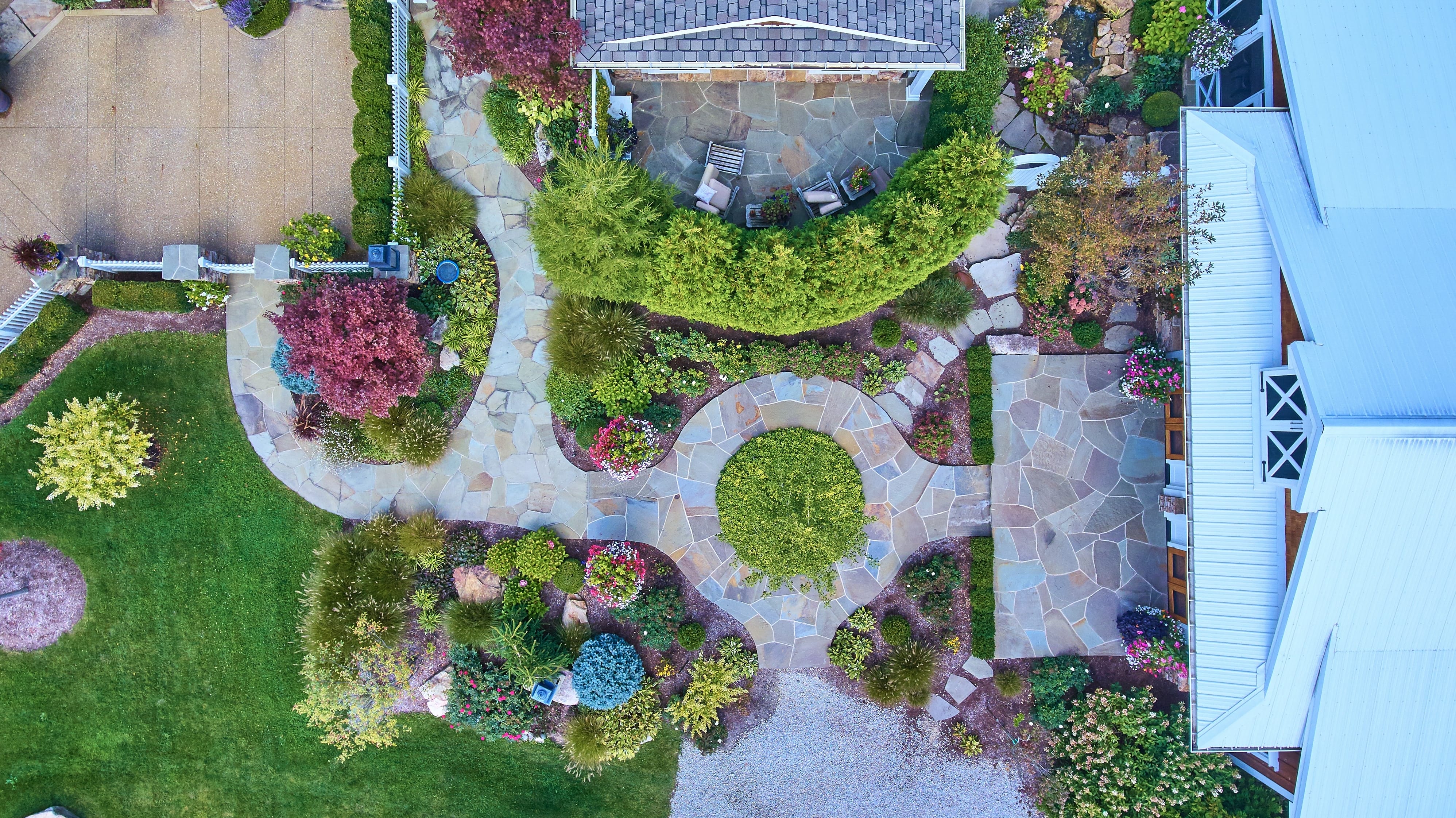
Creating a well-balanced landscape requires a combination of hardscape and softscape elements. Hardscaping refers to the non-living features of outdoor design, such as patios, pathways, and retaining walls. Softscaping, on the other hand, includes living elements like plants, trees, and flowers. Understanding the distinction between these two components is essential for designing a cohesive and functional outdoor space.
Key Summary: Hardscape vs. Softscape in Landscape Design
| Category | Hardscape | Softscape |
|---|---|---|
| Definition | Non-living, structural elements such as patios, walkways, and retaining walls. | Living, organic components including trees, shrubs, grass, and flowers. |
| Primary Purpose | Provides stability, organization, and function. | Adds color, texture, and natural movement to the landscape. |
| Common Materials or Elements | Stone, concrete, brick, pavers, metal, wood, gravel, decorative rock. | Soil, mulch, plants, turf, ground cover, seasonal blooms. |
| Maintenance Level | Low, with occasional cleaning, sealing, or repair. | High, with regular watering, pruning, fertilizing, and weeding. |
| Durability | Long-lasting and weather resistant. | Dependent on climate, soil conditions, and consistent care. |
| Aesthetic Role | Defines structure, lines, and usable areas. | Softens hard edges and enhances visual appeal. |
| Environmental Impact | Can increase heat retention and reduce water absorption. | Improves air quality, supports biodiversity, and reduces soil erosion. |
| Design Goal | Provides structure and function. | Brings life, balance, and seasonal variety. |
| Best Practice | Install hardscape features first to establish layout. | Add softscape afterward for texture and cohesion. |
Understanding Hardscaping: Key Non-Living Landscape Elements
Hardscaping involves man-made, durable materials that form the foundation of an outdoor design. These features help define spaces, improve accessibility, and minimize maintenance by reducing soil erosion and weed growth.
Common Hardscape Elements
- Patios and Decks: Provide outdoor seating and entertainment areas.
- Pathways and Walkways: Guide movement through the landscape.
- Retaining Walls: Prevent soil erosion and create visual interest.
- Fences and Gates: Offer privacy and security.
- Water Features: Add tranquility and a focal point to the space.
Choosing the Right Hardscape Materials
Selecting the right hardscape materials depends on durability, aesthetics, and functionality. Common materials include:
- Stone and Pavers: Natural and long-lasting, ideal for patios and walkways.
- Concrete and Brick: Versatile and durable, perfect for driveways and walls.
- Wood and Metal: Used for fences, pergolas, and accents.
Exploring Softscaping: Essential Living Landscape Components
Softscaping introduces natural, organic elements that bring color, texture, and seasonal variety to an outdoor setting. These components grow and evolve over time, requiring regular maintenance to thrive.
Key Softscape Features
- Trees and Shrubs: Provide shade, privacy, and wind protection.
- Flower Beds and Gardens: Add vibrant colors and attract pollinators.
- Grass and Ground Cover: Help with soil retention and aesthetics.
- Mulch and Soil: Essential for plant health and moisture retention.
Softscape Maintenance Essentials
To keep a landscape healthy and visually appealing, regular softscape maintenance is necessary:
- Watering and Fertilization: Ensure plants receive adequate nutrients.
- Pruning and Trimming: Maintain plant health and control growth.
- Weeding and Mulching: Prevent invasive plant growth and retain soil moisture.
The Importance of Balancing Hardscape and Softscape
A well-designed landscape balances hardscape and softscape elements to create both structure and natural beauty. Hardscaping provides stability and organization, while softscaping introduces movement and life.
How to Achieve a Balanced Landscape
- Establish a Focal Point: A well-placed water feature or tree can anchor the design.
- Consider Seasonal Changes: Choose plants that provide year-round interest.
- Use Hardscaping to Define Spaces: Patios and pathways create clear divisions.
- Incorporate Layers: Vary plant heights and textures for depth.
Practical Landscape Planning: Where to Start
If you’re designing or renovating an outdoor space, start with a clear plan that prioritizes both hardscape and softscape elements. Hardscaping should be completed first to avoid disturbing plants later in the process.
Steps to a Well-Designed Outdoor Space
- Evaluate the Space: Consider sunlight, drainage, and existing structures.
- Choose Durable Hardscape Features: Select materials that suit the environment.
- Incorporate Functional Softscaping: Pick plants suited to the local climate.
- Ensure Long-Term Maintenance: Plan for watering, pruning, and upkeep.
Conclusion
Hardscape and softscape are complementary components of landscape design. While hardscaping adds stability and function, softscaping brings life and beauty to the space. A well-balanced approach enhances curb appeal, improves usability, and creates an inviting outdoor environment that can be enjoyed for years to come.
FAQs: Hardscape vs Softscape
What is the difference between hardscape and softscape?
Hardscape refers to the non-living, structural parts of a landscape such as patios, decks, walkways, and retaining walls. Softscape includes the living elements like grass, plants, shrubs, and trees that bring colour and life to the space.
Why is it important to balance both in a design?
Hardscape creates structure, function, and organization, while softscape adds natural beauty, texture, and seasonal variety. A balanced design ensures the outdoor space is both practical and inviting.
Should hardscape be installed before softscape?
Yes, it is best to complete hardscape features like patios, walls, and pathways first. This avoids disturbing or damaging plants later and gives a foundation for the softscape elements.
What are the maintenance differences between the two?
Hardscape usually requires minimal upkeep, such as occasional cleaning or small repairs. Softscape needs regular care including watering, pruning, fertilizing, and replacing plants as needed.
How do costs compare between hardscape and softscape?
Hardscape often involves a higher initial investment because of the materials and construction involved. Softscape tends to cost less upfront but requires more ongoing maintenance, which can increase long-term expenses.
How does softscape benefit the environment compared to hardscape?
Softscape improves air quality, supports biodiversity, and helps with soil health and erosion control. Hardscape provides durability and usability but does not contribute ecological benefits, so a mix of both is usually the best approach.